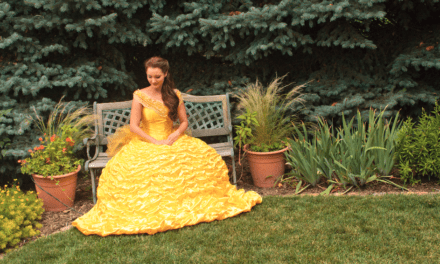CEDAR CITY — For many people, Cedar City, Utah, is nothing more that just a stop on I-15 on the way to another larger destination, such as Las Vegas or Salt Lake City. But for some, it is a community of approximately 25,000 – 30,000 people with opportunities to view or participate in world-class theater with The Utah Shakespeare Festival. For the children in the community the Festival has an Education Department that organizes a group called Playmakers, which presents various theatrical productions of well-known plays and musicals. This month Playmakers ran a production of Charles Dickens’s A Christmas Carol.
Experiencing this production with the writing of this review in mind, there were two obstacles that I knew I needed to overcome. First, the actors and the orchestra were all school-aged children and thus were not your typical cast and orchestra, meaning that I could not expect the quality of the production to be on par with those of a more seasoned cast and crew. Second, because this performance included members of my immediate locality, I would know some of the participants in this production whether it be cast, crew, or orchestra members. So, with these obstacles in mind, I decided to take two more objective observers: my two- and four-year-old nephews. I figured that since the performance would include some children only a few years older than them, the play should appeal to their age group.
This production did not take the traditional script format of most productions of Dickens’s A Christmas Carol, but instead made use of the story while shortening it to allow for more participation from the cast. The cast consisted of forty-one children and a nine piece orchestra of nine, which consisted of four violins, a harp, a flute, a clarinet, piano, and two cellos. The orchestra remained on the stage behind black scrim so that the audience could just view them without taking away from the action of the play. The orchestra was not only used for scary sound effects, but also during many scene changes as the cast and choir sang traditional Christmas songs, which maintained the old feel to Dickens’s story. These musical numbers also provided some opportunities for the cast to dance on stage but mostly assisted in a refreshing and lighter feel to the drudgery of Scrooge’s life and a break to the constant delivery of lines that some productions of A Christmas Carol employ. During some of the musical numbers I noticed a few choir and cast members not singing. There was also an obvious child missing from the production as some of the dance numbers were clearly absent a participant, but ultimately they maintained the attention of my two nephews, who listened and watched carefully whenever there was music.
All of the costumes were appropriately representative of the time period. Justine Padilla who played Fan Scrooge had a costume that was too long for her, which caused some tripping, generally got in the way, and detracted from the part that she played with gusto. The costumes that I felt were particularly well-done were those of Marley’s Ghost and the other three spirits. Notably I enjoyed the costuming of the Ghost of Christmas Future, which was large and cloaked in black. The ghost towered over Scrooge, and moved in a slow, flowing manner on stilts. The set was very simple, making use of a bed for Scrooge’s house, a couple desks and hat stand for his office, and a table for the Cratchit family. The set was clearly not the focus of the production, but rather the characters.
The narration was provided by four different narrators, one of whom was representative of Charles Dickens. The narrators toggled the narrative lines with each other to allow for more participation in the production. The production generally avoided long periods of one character talking, with perhaps the exception of Marley’s Ghost. Taylor Hall, who played the part of Ebenezer Scrooge, always spoke clearly and emphatically and did an excellent job of portraying the change in perspective that Scrooge undergoes. I sat in the back of the theater and could easily hear and understand nearly all of the lines, even though none of the players used microphones.
Ultimately, Playmakers’ production of Charles Dickens’s A Christmas Carol did a great job holding my attention and portraying Dickens’s story, owing mostly to the use of the musical numbers and to the overall brevity of the production, which was just over one hour in its entirety. While my four year old nephew was captivated by and enjoyed all of the production, this production would be best enjoyed by school-aged children with their parents.




